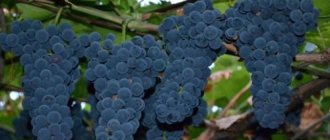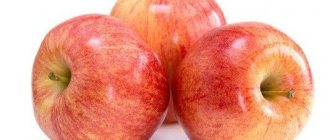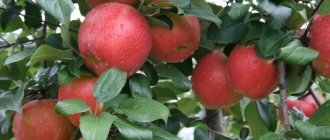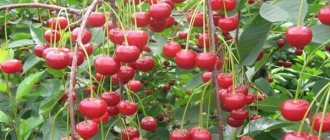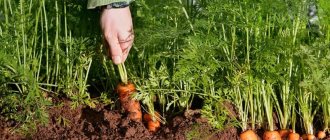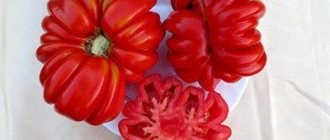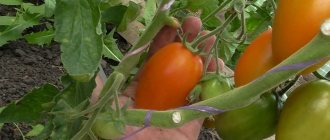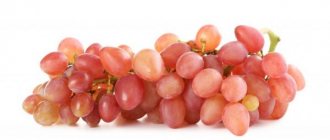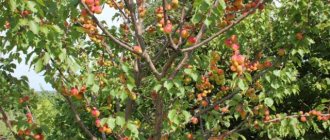A crop such as apricot, belonging to the genus Armeniaca Scop, is part of the plum subfamily. There are twelve types of this fruit that are most common in the world. The main cultivated variety is Avulgaris, or common apricot.
This fruit was known about seven to eight thousand years ago. It was brought to Europe from Armenia, and this happened about two hundred years ago. In this country, one of the symbols is the apricot. This tree is also called the “Armenian apple”. In our country, the culture is most often found in the North Caucasus and Crimea.
There is no such person who would not like to eat such a fruit as apricot. The tree, strewn with yellowish-pinkish Avulgaris fruits, is every gardener's dream. Tender, velvety skin and juicy aromatic pulp - all this makes apricot a favorite fruit of many. And since childhood. And if previously this fruit tree could only be grown in the southern regions, in recent years breeders have developed varieties that can withstand relatively harsh winter conditions well.
general information
Gardeners immediately fell in love with winter-hardy apricots. The most popular of them are “red-cheeked”, “Russian”, “hardy”, “beloved”, “honey”, “snowman” and “calyx”. An equally useful property of this crop is its ability to self-pollinate. This characteristic is a guarantee of an excellent harvest, even if there is only one apricot tree on the site.
According to the ripening period, this crop can be early, mid-ripening and late. Experts recommend growing several varieties in the garden that differ in this parameter. Then you can have sweet apricots on the table almost the entire season. Early varieties include “Alyosha”, “June”, “leskore”, “tsarsky”, “Sambursky early”, “alliance”, “Melitopol early” and “iceberg”. Mid-season varieties are considered to be “red-cheeked”, “goldrich”, “monastyrsky”, “altair”, “zaporozhets”, “burevestnik”, etc. Late varieties include “spark”, “kievsky krasen”, “kostyuzhensky”, “special Denisyuk” " and apricot "favorite". Many of them grow well in gardens near Moscow and delight with their harvest.
Apricot Favorite: reviews from gardeners about the variety
- Anastasia Vladimirovna, Samara region: “Apricot Favorite is one of the most popular varieties. Many gardeners I know prefer to grow it, and I am no exception. I really like the taste of these apricots, and caring for an apricot tree is not as difficult as some other varieties.”
- Ekaterina Andreevna, Volgograd region: “The Favorite apricot variety is the only variety that I grow in my garden. I tried to grow other varieties, but for some reason they didn’t take root, but the Favorite apricot took root perfectly, and the tree grew about one and a half meters long.”
The best apricot for the Moscow region
For each region, you need to select specific varieties that can withstand the climatic conditions of that zone. For example, only those varieties that have sufficiently high winter hardiness and tolerate frost well, which are quite common here in the cold season, are suitable for growing in the Moscow region. The “favorite” apricot, which belongs to the group of varieties with a late ripening period, is distinguished by its unpretentiousness and early fruiting. Its fruits are valued for their excellent taste, excellent aroma and good appearance. Apricot “favorite” was bred in early 2000 by breeder Kramarenko. The originator of the variety is the Main Botanical Garden of the country. In 2004, the culture was included in the State Register of the Central Region. This, judging by the reviews, is the best apricot for the Moscow region.
Description and history of variety selection
Favorite is a young, but already very common variety of apricot in Russia, Ukraine and Belarus (and some other CIS countries). The tree can be classified as medium-sized (growth vigor is moderate).
The crown spreads out extremely modestly, the height of an adult tree rarely exceeds 4 m. Annual trunks take on a bright brown shiny hue and do not fluff. Old trunks are usually brown or gray in color.
The leaves are medium-sized with a sharp end, green, shiny. Flowers bloom in spring before foliage emerges. The fruits are quite large (25 g), bright yellow-purple in color, and have a small downy surface.
The flesh is very juicy, sweet, the bone is medium-sized, and comes off easily. The variety appeared at the beginning of this century thanks to the fruitful work of the Russian breeder, candidate of sciences in biology, L. A. Kramarenko.
The inclusion of Favorit in the Russian State Register of Breeding Achievements took place in 2004, and the variety was recognized as the most desirable for fruit plots in Moscow and the Moscow region, as well as other regions of the central region of the Russian Federation.
Did you know? There are more than 20 types of apricots in the world. The most unusual is the black apricot, which in appearance is more like a plum. However, despite the external difference from other species, black fruits have the same sweet taste.
Description of the variety
This fruit tree has moderate vigor. An adult plant reaches three to four meters in height. The “favorite” apricot of late ripening has a medium-spreading crown. It has branched annual shoots, shiny, without pubescence and brown in color. The bark on old trunks gradually becomes gray-brown and becomes covered with longitudinal cracks. The leaf blade of this apricot variety has an elongated shape, with a pointed end and jagged edges. The petiole of the plant is thin. The tree of the “favorite” variety of apricots is covered in spring with white flowers of medium size (up to three centimeters in diameter). The buds open before the leaves appear.
Apricot fruits, which weigh up to thirty grams, are quite large. They have a rounded shape, an uneven surface and slight pubescence. Apricot fruits of the “Favorite” variety are orange in color with a pronounced blush. They have bright flesh and a dense, juicy texture. The seed of the fruit is quite small, but it can be easily separated. The “favorite” apricot, as already mentioned, is self-fertile, so it does not require additional pollinators. However, many experts advise: for a good ovary, plant varieties such as “Lel”, “Tsarsky” or “Monastic” next to it. Judging by the reviews, this apricot is best suited for the Moscow region.
Characteristics of the Favorit variety
Favorite is a very common tree due to its qualities, due to which it greatly outperforms other varieties. It has quite a lot of advantages, but few disadvantages, but everyone who wants to plant this variety on their plot should know about them.
Drought resistance, frost resistance
The variety is classified as a frost- and drought-resistant tree. The favorite is able to withstand a drop in the average daily temperature in winter to -15ºС. At this temperature, no noticeable changes are observed on the bark.
However, it is very important to understand that good frost resistance in winter does not indicate unpretentiousness to the temperature regime during the flowering period. The favorite difficultly tolerates sharp drops in temperature at the beginning of spring, as well as heavy precipitation during this period.
However, with the exception of this period, the Favorit variety is distinguished by its relative unpretentiousness and drought resistance in the summer: even without timely watering in dry summers, the tree is able to develop normally, however, in order for the fruits to set and form normally, periodic watering is still necessary for the apricot, while To preserve moisture in the soil, experts advise additional mulching of the tree trunk area in regions with a hot climate.
Apricot pollinators
The main advantage of Favorit is that the tree bears fruit well without additional pollinators (it has high self-fertility).
Did you know? The name "dried apricot" applies only to dry, pitted apricots cut in half. The whole dry fruit is called “kaisa”.
This is a very important factor for the cool center of Russia, where the risk of return frosts is very noticeable, and therefore such an additional condition as outside pollinators reduces the prospect of being left without a harvest.
By the way, in terms of winter hardiness, Favorite is also significantly ahead of most of its relatives. However, if there is an opportunity to plant varieties such as Tsarsky, Monastyrsky and Lel nearby, then the yield will increase very significantly.
Productivity of the variety
As already noted above, the yield of this species is not the main trump card. However, it cannot be said that very little fruit grows. In a good harvest year, you can get up to 5 kg of large apricots from one branch. On average, a whole tree produces about 20 kg per season.
Area of application of fruits
The berries have relatively good shelf life and are not prone to radical damage during transportation. Apricots of this variety are universal: they can be consumed freshly picked or prepared into delicious jams, confitures, preserves and compotes.
Perfect for drying and canning. Fresh apricots also make an excellent filling for pies and other baked goods. Slightly overripe fruits can be used to make homemade wines and liqueurs.
Ripe fruits contain a large amount of sugar and are also incredibly rich in potassium (100 g of product contains more than 350 mg).
Resistance to diseases and pests
The favorite is classified as an unpretentious tree that does not require special protection due to its high resistance to diseases and pests. However, the variety is moderately resistant to cluster blight, and can also be slightly affected by aphids (up to 1%).
Did you know? A unique feature of aphids is their ability to give birth to pregnant offspring.
Advantages, disadvantages of the variety
In the list of positive characteristics of “Favorite”, early pregnancy takes first place. In addition, this variety has high frost resistance, which makes it possible to grow it in the Moscow region, self-fertility, excellent presentation and good transportability.
In addition to the advantages, experts also name a number of disadvantages that characterize the “favorite” apricot. These are late ripening periods, the need for regular pruning and thinning of the crown, as well as the dependence of the taste and quality of the fruit on the weather.
Advantages and disadvantages
Like any apricot variety, Favorite in its description has both positive and negative aspects of cultivation. You need to know them in order to properly care for trees in order to obtain a bountiful and tasty harvest.
The advantages of this variety include:
- precociousness. Trees produce their first harvest quite early - at 3–4 years of age;
- high frost resistance. Thanks to it, seedlings can be safely planted in the Moscow region and other areas where the climate is not mild in winter;
- ease of care. To obtain abundant fruiting, tree care should include a minimum set of standard agrotechnical practices;
- the fruits have an excellent presentation;
- excellent transportability of fruits;
- self-fertility.
Favorit is also known among gardeners for the excellent taste characteristics of its fruits. Moreover, fruits have a universal purpose.
Despite such a numerous list of advantages, this variety also has some disadvantages. Among the obvious disadvantages, the late ripening of fruits should be noted. There is also a direct dependence of fruit quality on weather conditions. Unfavorable growing conditions include rainy and cloudy summers, late spring, early autumn frosts, etc. Because of this, in some regions apricots do not always have time to ripen in time for harvest and hang on the branches immature.
Trees are prone to dense crowns, so every year the crown should be thinned so that the fruits formed on the shoots are well illuminated by the sun. Because of this feature, Favorite requires regular formative pruning in the first years of cultivation.
Favorite is an excellent variety in many respects. It is easy to grow and, with proper care, will delight you with delicious apricots.
All about the time and place of landing
“Favorite,” like most fruit trees, is a light- and heat-loving crop. Therefore, planting apricots in open ground should be done in early spring. In the conditions of the Moscow region, it is better to carry out this work in early April. Planting an apricot during this period will allow the seedling to take root better, and the risk of frost damage to the trees is minimized. In the fall, placing seedlings in open ground is considered less favorable by experts.
In order for the self-fertile “favorite” apricot to grow normally and produce a good harvest, it is better for it to be given the southern side of the plot, where there is free access to sunlight. This fruit tree can be planted both along the fence and near buildings. The main requirement when planting is that the area must be protected from wind and drafts.
For quick rooting, young trees can be fenced on the north side with small shields painted with white. Such structures reflect the sun's rays well and prevent the seedlings from freezing.
Apricot “favorite” develops well and bears fruit successfully in elevated areas and small slopes. This crop should not be planted in lowlands or in places where there is constant flooding. In this case, the groundwater level at this location should not exceed 3–4 m.
Landing Features
Several seedlings are rooted at a distance of 4 m from each other. In rows this distance is 5 m.
Apricot Favorite grows well; if planted close, access to sunlight to the fruit will be difficult
Recommended timing
Favorite apricot is planted in early spring - late March or early April. It is important to choose a time when the buds have not yet appeared on the shoots. Such a tree quickly takes root in a new place and easily adapts to the climatic conditions of the region. Autumn planting for the crop is not recommended.
Choosing a suitable location
Apricot Favorite needs open areas with good access to light and air. Strong winds and drafts should be avoided. It is advisable to plant the crop next to a building or fence, on the south side of the garden. In lowlands, the plant can die from stagnation of water; apricot Favorite is rooted at higher elevations.
What crops can and cannot be planted next to apricots?
Other varieties, including peach, are planted in the same area as Favorite. The proximity of apricots to apple trees, plums, pears, and mountain ash is not recommended. These crops have common diseases and consume the same elements from the soil. Walnut is planted away from fruit trees, as this strong tree kills everything that grows within a radius of 5 m.
Selection and preparation of planting material
It is better to purchase varietal crops from a nursery. The tree chosen is 2 years old, with a well-developed root system, several branched shoots, and a straight, strong trunk.
The quality of the seedling determines its survival rate and future harvest.
Before planting, dry root shoots are cut off, and the root of the young plant is soaked for 12 hours in a growth stimulator.
Landing algorithm
Young apricot Favorite is rooted according to the rules. Before planting, dig up the soil and mix it in equal parts with humus.
Procedure:
- A month before the expected planting date, holes are dug. Their depth and diameter should be 70 cm.
- The hole is filled one third with a nutrient mixture: garden soil, sand, organic matter. All components are taken in equal parts. The soil mixture is laid out in a mound.
- The seedling is placed vertically in a hole, the rhizome is laid out on the surface of the mound. The root collar is deepened by 3 cm.
- The root is covered with fluffy soil and lightly compacted.
- A tree trunk circle is formed around the seedling and the plant is watered abundantly.
Water helps to shrink the soil and fill all the voids
After watering, the crown is pruned, shortening the shoots to 60 cm.
The soil
Sweet apricot varieties are quite demanding in terms of nutritional composition and soil structure. Light fertile soil - loam or sandy loam soil - is perfect for them. The optimal acidity of the soil should be neutral or slightly acidic with a pH level of 6 to 7. At the same time, the soil must have good permeability to both water and air. Sandy or clay areas are practically unsuitable for growing this apricot variety.
If the crop is planted on unirrigated black soil, the tree will not only enter the fruiting period late, but will also produce irregular and meager harvests. Oak, old pears, as well as maple and ash are considered good “neighbors” for this variety of apricot. “Favorite” has a developed and deep root system, so in areas where these plants are present, it usually always takes root well.
Recommendations for planting
To get a good harvest of apricots, you need to follow the basic rules and recommendations for planting the Peach variety. Of considerable importance is the choice of place for planting, its timing and preparation of the soil for planting.
Selecting a location
The place for planting the apricot peach tree should be:
- protected from strong winds and drafts;
- maximum sun exposure;
- with a groundwater level of 3-4 m from the ground surface;
- with fertile, moisture-saturated soil (sandy or loamy soils are suitable).
This variety is uncomfortable to grow on clay soils or arid chernozems and its yield will be far from good. The soil should be neutral, or slightly acidic. Be sure to lime acidic soil with ash.
The ideal option for planting peach apricots would be a small hill in the south of the site. You can “cover” the tree from drafts with a fence or light buildings, but you need to make sure that their shadow does not fall on the crop.
Landing dates
Plant Peach apricots in the spring. In the south of the country, gardeners can do this already at the end of March, and in the middle zone - in May. Planting trees in the spring will help them quickly adapt to weather conditions and grow stronger before the onset of cold weather.
Preparing soil and seedlings
After you have purchased apricot seedlings and decided on the planting location, you can begin preparing the soil:
- Dig holes for the trees in advance (their dimensions should be approximately 80 cm in length and the same in width). In this case, leave the top of the soil and remove the bottom.
- Mix the top with compost or rotted manure, add 0.5 kg of superphosphate and a little wood ash. Mix everything again.
The distance between planted crops should be 4-4.5 m. This is necessary to prevent tree roots from mixing with each other, which has a very detrimental effect on the yield and health of the seedlings.
Planting process
When the holes are ready and the soil is properly fertilized, you can begin the process of planting seedlings:
- place the seedling in the middle of the recess;
- Gently straighten its roots;
- check the location of the root collar - it should be 5-10 cm in the ground, taking into account the type of soil (5-6 cm for chernozem and 10-12 cm for sandstone);
- When filling the hole, tamp it down a little so that there are no “air pockets” left;
- At the end of planting, compact the soil and water the planted crop so that the soil is saturated with moisture.
To maintain soil moisture and protect the tree from sudden temperature changes, mulch the space around the trunk with sawdust, straw, pine spruce branches or small leaves. In winter, use snow as mulch.
Choosing seedlings
Healthy planting material is the key to successful rooting and development of a strong tree. The “favorite” apricot, the yield of which also depends on this condition, must meet certain criteria. When choosing seedlings, first of all you should pay attention to the external condition of the branches and trunk. They must be smooth and free from damage or wounds. For cultivation in the Moscow region, it is advisable to choose planting material using standard formers. When rootstocking, frost-resistant, non-ripening crops should be used, for example, cherry plum, plum, peach, almond and, of course, apricot. This is how experts increase the frost resistance and drought resistance of the variety. The best indicators of resistance to drought in apricots grafted onto almonds are slightly lower - on peach. When purchasing seedlings, you need to pay attention to the development of the root system. The roots should not be damaged. At the same time, the presence of dried or frozen parts is also unacceptable.
Based on this, we can say that it is better to buy seedlings in nurseries or specialized stores. Trees that are offered on the market by private traders are not always of good quality. For planting, you need to choose one-year or two-year-old seedlings with an open or closed root system. Those trees that nurseries sell in containers today take root much better and begin to bear fruit much earlier.
How to choose a seedling
A good apricot can only grow from a healthy seedling. Purchasing plants from nurseries is reliable. It is important to be able to distinguish a healthy seedling from a diseased one.
- Carefully inspect the trunk and branches of the plant. Signs of an unhealthy condition are a wrinkled surface, cracks, bumps on the bark, and suspicious spots. A healthy seedling always has smooth bark.
- The most important part of an apricot is its root system. It should be developed, without signs of damage. A seedling with dried or frozen roots will not grow.
For planting, one or two year old seedlings are usually purchased. In Russia, seedlings grown on strain-forming plants have an advantage. A favorite plant grafted onto a plum, peach, cherry plum, almond or apricot is less prone to overheating, and its level of winter hardiness increases significantly.
Preparing the landing site
It is best to carry out preparatory work on the site a year before planting apricots on it. For example, in the Moscow region, single-component soil is very common, which should be structured. To begin with, a landing pit is dug with a diameter of about eighty and a depth of up to seventy centimeters. It is better to increase its size if the soil in the area is not enriched with nutrients. In general, the poorer the soil, the larger the hole should be dug. The bottom is filled with drainage made of expanded clay, coarse gravel or broken brick. To fill the pit, you should prepare a soil mixture of clay, peat and sand, taken in equal proportions. Many also add lime or wood ash, fifteen to twenty grams of compost, superphosphate and potassium salt. The pit is covered with a layer of clean soil on top.
Diseases
- With moniliosis, flowers dry out and cracks appear on the shoots. Spraying the tree with a urea solution in the spring will help prevent infection. Bordeaux mixture is used for treatment in the early stages of the development of moniliosis; at further stages it is preferable to use the drugs Teldor and Horus.
- Clusterosporiosis first appears as brown spots, then holes appear on the leaves and cracks on the shoots. Spraying with a solution of copper sulfate in the fall and destroying damaged branches acts as an effective prevention. Chorus and copper sulfate solution are used for treatment.
- Aphids feed on leaf sap. The productivity of apricot and its immunity are reduced. Aphids can be controlled using the drugs Nitrafen and Karbofos.
Apricot Favorite is a very beautiful, productive variety, it is winter-hardy and suitable for growing in the Moscow region. With proper care it bears many sweet fruits.
Read more:
- Apricot black velvet variety description reviews photos
- Apricot monastery: description of the variety, photo
- Apricot Pineapple description of the variety: reviews and characteristics of the varieties Royal, Melitopol early and late, photos
- Dessert apricot: variety description, photo, video
Landing: step-by-step instructions
Before placing seedlings in the ground, damaged and dried roots should be cut off. There is no need to update the cut of previously processed processes. The roots of the seedlings should be dipped in soil mash. It must be prepared immediately before planting. To do this, fertile soil should be diluted with water until the consistency of thick sour cream is obtained. Experts recommend adding heteroauxin to the mixture at the rate of 0.1 grams per ten liters of water. This product will stimulate the formation of roots and promote better development of young trees.
Then a small earthen mound is made at the bottom of the prepared hole. A peg is driven in at a distance of ten centimeters from the center. A seedling is placed in the center of the planting hole, the roots of which are carefully spread out on the mound. You need to make sure that the root collar is four to six centimeters above the bottom level.
When filling the hole with soil, the seedling should be shaken periodically to fill all voids with soil. The soil should be carefully trampled down with your foot. After this, the seedling is tied to a peg with twine. Then a hole with a diameter of about forty centimeters is formed, and an earthen roller is made along the edges.
Water the seedlings after planting with twenty liters of clean warm water. After this, the hole is mulched with dry soil, wood shavings or peat. During the first month after planting, it is necessary to carefully monitor the soil moisture, in no case allowing the soil to dry out.
Alyosha
A mid-early apricot variety, the harvest begins in late July - early August.
The tree is medium-sized (up to 4 m in height) with a round, spreading crown and large flowers.
The fruits are small in size (up to 20 g), oval-round in shape, slightly flattened, light yellow, sweet and sour in taste, smooth skin.
The variety is self-fertile, has an average yield, produces its first fruits in the 3-4th year after planting.
The plant has increased frost resistance, tolerates a lack of water well, and loves an abundance of sunlight. When fully ripe, the fruits may fall off.
The transportability of the fruit is average, keeping quality is excellent. Suitable for fresh consumption and processing.
Apricot “favorite”: care features
Like any other plant, this fruit crop also requires the right approach to cultivation. Only competent care of this variety of apricot will allow the gardener to grow a strong and healthy tree on the plot, which annually pleases with a bountiful harvest of high-quality, tasty fruits. The basic rules of agricultural technology are timely pruning, fertilizing, protection from pests or diseases, and, of course, timely watering. The gardener needs to keep the area around the trunk clean, regularly removing weeds and periodically loosening the soil.
Apricot variety Snegiryok
The frost resistance of this species is evidenced by its distribution in cooler regions than the Moscow region.
The tree is distinguished by its unpretentiousness to the composition of the soil and its small size. An adult plant reaches no more than 1.5 m, and this does not prevent it from demonstrating high productivity, up to 10 kg per tree. In addition, it is easy to collect fruit from such a low-growing apricot. Features of the Snegirok variety:
Apricot fruits are highly elastic. They are stored for a long time without loss of quality, until January. You just need to provide the right conditions. It is easy to transport crops even over long distances. The flowers of the variety are self-fertile. The fruits are quite small. Their taste characteristics are without any frills. The variety has low resistance to moniliosis, leaf spot and some other diseases
The plant requires special attention during prolonged spring rainfall: treat the crop against fungal infections.
Watering
Apricot “favorite” has a powerful and deep root system. Therefore, it may well receive the moisture necessary for normal growth from the lower layers of the soil. Under normal climatic conditions, experts recommend four main waterings - in April, May, early July and October.
Irrigation is best done using a drip system or ring grooves. The water norm for one-year-old trees is fifteen or twenty liters, for two-year-old trees - two buckets, three-year-old trees - three, etc. With each watering, the soil should be moistened to a depth of thirty to forty centimeters. After any irrigation, the hole is mulched with pine needles, dry soil or wood shavings.
How to plant an apricot (video)
- When planting on a trunk, annual growths are cut off and the seedling is carefully lowered into a hole at least 60 cm deep in well-loosened soil so as not to damage the roots.
- The distance between trees should be 5 x 5 meters.
- When planting, the root collar should rise slightly above the ground (by 2 cm), because after watering the loose soil will settle, and the neck that has sunk below the soil level will warm up. This leads to fungal diseases of the tree.
- The hole with the seedling needs to be well watered, this helps the soil settle and better fix the seedling. It is necessary to form an earthen roller in a circle at a distance of 30 cm from the tree. Water is poured into the resulting circle, being careful not to expose the roots of the plant.
- To protect the soil from drying out, the tree trunk circle is mulched with leaves and straw.
Description of the Favorit variety: frost resistance and unpretentiousness. The plant has requirements for the planting site.
- Any apricot loves light and warmth, so it is better to choose the southern slopes of small hills. A good option is to plant seedlings near hedges or buildings that can protect young plants from the wind.
- Overwatering of apricots is a common cause of various diseases. Before planting, you should check the depth of groundwater; it should lie no closer than 3-4 m from the surface.
- The plant grows and bears fruit better on light and fertile soils. Loams and sandy loam soil are well suited for planting apricots. The soil should be slightly acidic or neutral.
Read more: Spots appeared on grape leaves - what to do and how to treat the bushes
You can plant seedlings in autumn and spring. In autumn, the well-being of seedlings is threatened by frost. Spring is the most favorable time for planting. Plants planted in April have more time to acclimatize and take root than those planted in the fall.
Favorite - self-fertile apricot variety
Trimming
This is one of the main stages in the process of caring for such a fruit-bearing tree as the “favorite” apricot. Pruning is most often done in the spring. In the fall, it can weaken the tree, especially during the cold or rainy season. In the first years of life, the crown is formed. Most often, a sparse-tiered form is chosen. In this case, five to seven first-order branches are left for regrowth at intervals of forty centimeters.
The next year after planting, all branches are cut off at a level of about a meter from the ground. Initially, those located along the main row are shortened by half. Then the remaining branches are cut down to the cambial ring. At the end of summer, non-main shoots and those growing at an acute angle are removed.
In the second year of apricot life, the second tier is laid. At the level of forty centimeters from the first branching, the second order is already formed. In this case, small annual branches are not pruned, and annual shoots with a length of sixty centimeters or more are shortened by half. The next year, a new tier is formed according to the same scheme. After crown formation is completed, sanitary and thinning pruning is performed. At the same time, dry and broken branches are removed, as well as those shoots that grow vertically or in depth.
Features of cultivation and subtleties of care
The rules for growing and caring for the Favorite apricot are simple and it is better to follow them. In this case, under favorable weather conditions, the gardener can be guaranteed a good harvest.
Watering
Everyone knows that any plant requires watering. But the watering rules differ for different plants. Apricot Favorite is a drought-resistant crop and does not respond well to stagnant water or dampness. Therefore, it is watered only 3-4 times per season, but abundantly. After watering, the soil should be moist to a depth of 30–35 cm.
Watering schedule:
- During the flowering period or after it ends.
- At the beginning of summer, when young shoots and berries are actively growing.
- After the harvest.
- Pre-winter watering in late autumn.
Compliance with this schedule is especially important for young trees with an underdeveloped root system. Over the age of 7–8 years, the importance of watering for a tree becomes not too critical and can be reduced, especially in the rainy season.
Feeding
When the tree has used up a significant portion of the nutrients provided during planting, additional fertilizers are added. As a rule, this begins after harvesting the first fruit harvest.
Now the tree will need organic fertilizers, which are incorporated into the soil when digging tree trunk circles in spring or autumn. This will need to be done once every 3–4 years in the amount of 5 kg of humus or compost per 1 m2 of tree trunk circle.
Mineral fertilizers are applied annually. Nitrogen - in spring, potassium - in early summer, phosphorus - in autumn.
Table: types of mineral fertilizers, their dosage for apricot Favorit
| Fertilizers | Dosage | Mode of application |
| Nitrogen-containing - urea, ammonium nitrate, nitroammophoska | 30–40 g/m2 | In dry form, for digging |
| Potassium - monopotassium phosphate, potassium sulfate | 10–20 g/m2 | Add when watering to each bucket |
| Phosphorus-containing - superphosphate, double superphosphate | 20–30g/m2 | In dry form, for digging |
| Complex | According to instructions | |
An overdose of fertilizers for apricots is more harmful than their lack.
Trimmings
Some inexperienced gardeners sometimes miss this important component of annual tree care, and this should not be done. The science of pruning behavior is complex only at first glance. Having carefully studied the types of pruning and the rules for their implementation, understanding how the crown should be formed correctly, the gardener will then be able to easily and competently carry out this work.
Recent Entries
5 working ways to use tar in the garden 7 indoor plants that help you get married even in adulthood Indoor plants that can bloom in trouble
Formative
For the Favorite apricot, as for a fairly tall tree, a crown formation in three tiers, which is called sparse-tiered, is suitable. The procedure for carrying it out is as follows:
- After the young seedling has survived its first winter, before the start of sap flow, you need to cut out all the branches except two or three, which will be left to form the first tier. The lower one should be at a distance of 30–40 cm from the ground. All others, including branches of subsequent tiers, should be 25–35 cm apart from each other. The central conductor and the remaining skeletal branches should be shortened by 30–40%.
- At intervals of 1–2 years, according to the same scheme, first the second and then the third tiers are formed. The only difference is that now the second-order branches, which begin to grow from the skeletal ones, are also shortened. And also in the last year, the conductor above the base of the upper branch is completely cut out. This is done to limit the growth of the tree.
- In subsequent years, care must be taken to ensure that none of the skeletal branches takes on the role of a central conductor and continues to grow the tree in height. To do this, the branches of each tier must be the same length and not have superiority over the neighboring ones.
Apricot Favorite is given a sparsely tiered crown shape
Sanitary
This is the simplest type of pruning, known even to an inexperienced and novice gardener. Without knowing any rules, a person intuitively understands that it is advisable to remove dry branches. The sick and broken too. Let us clarify that this procedure is usually carried out in the fall, when the garden is being prepared for winter, and in early spring, if frostbitten or broken branches have been added over the winter.
Regulatory
Designed to regulate crown density. If the shoots growing inwards shade the crown too much, they are thinned out. This operation is usually carried out simultaneously with sanitary pruning. It is worth noting that due to the sparse structure of the crown inherent in Favorite, this type of pruning is rarely used for it. Also in the summer, the tips of young, one-year-old branches are cut off by 10–15 cm. This is called "chasing", the purpose of which is to encourage additional shoots to grow. Next year they will produce additional fruit.
Rejuvenating
When an old tree reduces the amount of yield, fruiting moves to the ends of the branches; the fruiting period can be extended by rejuvenation.
First of all, you need to expose all the skeletal branches inside the crown. In a year, a large number of young shoots will appear on them. The tops growing upward are cut out, and many flower buds should form on the remaining annual shoots.
You can also carry out a more serious operation - replace two or three skeletal branches with new ones. To do this, they are pruned, leaving a part 30–40 cm long. By next year, several young shoots will grow on them, which are cut out all but one on each branch - the strongest and located on the outside of the parent branch. They will become a continuation of the cut old branches.
In a few years, in the same way, it will be possible to replace another 2-3 branches.
How to avoid mistakes when pruning
Any pruning, although it serves to benefit the tree, if done incorrectly can cause damage, sometimes significant. Therefore, before proceeding with the operation of cutting out any branches, the gardener must learn the basic rules.
- Do not approach the tree with a blunt instrument. Knives, hacksaws, pruners, loppers must always be sharpened. Only in this case will the cuts turn out clean and smooth. and will heal easily.
- To avoid infection, the instrument should be disinfected before use. Alcohol, hydrogen peroxide, and 1% copper sulfate solution are suitable for this purpose. Gasoline, kerosene and other petroleum products should not be used for disinfection.
- Do not leave knots when pruning. When they dry out and become saturated with moisture, they become a refuge for pathogens of various diseases, especially fungi, which over time can infect healthy wood, possibly forming a hollow.
- Thick, heavy branches need to be cut in sections.
- All cuts with a diameter of more than one centimeter are treated with garden varnish. When purchasing it, you need to make sure that the composition does not contain petroleum products (kerosene, gasoline, paraffin, petrolatum, etc.). A good garden varnish can only be prepared using natural ingredients - lanolin, beeswax, etc.
Preparing crops for winter cold
To prevent the apricot tree from suffering from low temperatures, cold winds or snow, it must be prepared for wintering in advance. To do this, the gardener should whiten the trunks and bases of skeletal branches in the fall with garden white or slaked lime. Then the tree trunk area is mulched with peat, sawdust or spruce branches. The crown of young trees needs to be tied with twine.
If the winters in the region, for example, in the Moscow region, are cold, then it is necessary to form a cone over the tree from a garden shelter or from spunbond, and fill the base with sand or earth. Experts do not recommend using hay, fallen leaves or straw for mulching, and you should not use wire or other metal products as fastening.
Watering, pruning, fertilizing
An apricot that is well cared for bears fruit abundantly and does not get sick.
Favorite is not a capricious crop, and caring for it does not require excessive effort.
- Apricots are usually watered twice in spring and once each in summer and autumn. A seedling needs 15–20 liters of water; the older the tree, the more moisture it needs. Irrigation rates vary depending on the weather. After each watering, the tree trunk circle is mulched to slow down the evaporation of water.
- Formative pruning continues for the first three years after planting. The common crown shape for Favorite is sparsely tiered. In subsequent years, sanitary pruning is carried out, cutting out broken, frozen, dry and thickening branches. Periodically, the tree needs rejuvenating crown pruning.m
- Fertilizers are applied to the ground annually, the rate of which is calculated based on the age of the tree and its current needs. Additives are applied in early spring and after the crop ripens.
- A tree, especially a young one, must be prepared for wintering. The tree trunk circle is mulched, the trunks are whitened with slaked lime, and if necessary, the plants are covered.
Read more: Grape burn on berries and leaves
Apricot yield
As already mentioned, this variety is early-bearing. It begins to bear fruit in the third or fourth year after planting. The ripening of its fruits in most regions of our country begins in August and lasts until the end of September. If the weather was cold or rainy in the summer, there is a risk that most of the apricots will remain on the branches in an unripe state. The average yield of each tree of the Favorit variety ranges from eighteen to twenty-three kilograms.
Fruits should be stored in airtight paper bags in the refrigerator. They also keep well in plastic containers. In such conditions, apricots of the “favorite” variety remain fresh for a long time for six to eight days. At temperatures from zero to one degree and at a humidity of 85–95%, fruits can be stored for up to thirty to forty days. A longer storage period is not recommended, since in this case the destruction of the pulp structure begins.
Botanical features of the variety
Apricot under the sonorous name “Favorite” forms powerful trees no more than 3-4 meters high. The plant has moderate growth vigor. Annual shoots are characterized by average branching rates.
The benefits and harms of pomegranate tea for the body, the history of tea
The flowers are medium in size, no more than 3.2 cm in diameter, milky white in color. Fruiting is observed on any type of shoots, which has a beneficial effect on yield . Grafted apricot seedlings enter the stage of full fruiting in the third or fourth year after grafting. Fruit ripening occurs at a later date. Yields are average. According to the data declared by the originator of the variety, the level of winter hardiness and frost resistance is good.
Fruiting of the “Favorite” variety is observed on any type of shoots, which has a beneficial effect on productivity
Reviews
It must be said that today many gardeners have their “favorite” apricot growing on their plots. Reviews indicate that this variety is the best for growing in the Moscow region. Here it can grow into a luxurious tree, which in summer gives rapid growth on average up to one and a half meters. As evidenced by reviews from gardeners, the “favorite” apricot is a fairly unpretentious variety. If all agrotechnical standards are observed when growing it, the tree will produce regular harvests, delighting the owners with its sweet fruits. It withstands fairly low temperatures and bears fruit well even in cool climates.
Harvest and storage
Favorite is an early ripening tree, so the first fruits can be expected already in the 3rd year of the plant’s life (sometimes the 4th). Apricots usually appear between mid-August and the end of September.
The amount of harvest depends on weather conditions. On average, fertility indicators are 20 kg per season. Favorit apricots tolerate transportation well due to their elastic skin.
They retain their presentation for up to 10–14 days. An apricot can last about a month in the refrigerator, sometimes even 1.5, and can be stored frozen for up to six months. As mentioned above, the fruits of this variety are suitable both for fresh consumption and for drying and canning.
So, the Favorite apricot variety is very widespread due to its large number of advantages, as well as its relative unpretentiousness.
The tree can easily endure both cold winters and dry summer days and produce an excellent harvest, which is suitable both for eating raw and as a raw material for delicious jams and preserves. Dried apricots and kaisa are also made from this species.
Description
In order to characterize this plant as a type (another name for the crop is Venta strawberry), it will be necessary to note the following special features:
- The bushes are relatively low, with medium spreading.
- Their foliage is quite large and light green in color.
- The peduncles are of sufficient thickness and are located approximately at the level of the leaf dome.
- The inflorescences of the plant are multi-flowered, not very large in size.
- The flowering period is very protracted, lasting almost until the beginning of fruiting.
Strawberry Favorite
Regarding the Favorit strawberry fruits, the description of which is expected to be read in the future, suffice it to say that they are quite large and have a specific wide-conical appearance.
Note! The berries have this shape only at the initial stage of fruiting.
Their size can be judged by the fact that no more than 2-3 berries usually fit . All samples of this variety have a perfectly round shape (with a slight conical point at the end). Their rich red color with a slightly noticeable glow gives the fruits an amazingly attractive appearance. The characteristics of the plant presented here will be incomplete if the following details are not noted:
- The berries of this variety are distinguished by their dense pulp, which guarantees their good preservation during long-term storage and transportation.
- The taste of the fruits of the plant will appeal to most true connoisseurs of this type of sweetness, which is garden strawberries.
- In addition, the Cambridge Favorite strawberry, the variety description of which is presented in this section, is resistant to most garden diseases.
Due to the low frost resistance of strawberries, experts advise growing this variety mainly in warm regions (in the Krasnodar Territory, for example). However, there are always enthusiasts of their business who manage to breed it in the northern regions. Gardeners from these regions cover the berries with a thick layer of straw to prevent freezing when preserving them for the winter.
Diseases and pests
Apricot Favorite can be affected by clasterosporiosis. This is a fungal infection, another name for it is perforated spotting.
The disease spreads from the leaves to the fruits, rusty spots appear on apricots
As soon as traces of the disease appear on the leaves, the tree is urgently treated with fungicides.
Aphids are a pest that is dangerous for the Favorit apricot. The insect eats away the soft part of the leaves, weakening the plant and reducing productivity.
Leaves affected by aphids curl, for this reason spraying without removing the affected areas becomes ineffective
The tree is treated with insecticides according to the instructions. Previously affected leaves are removed.
Landing rules
To get a good harvest and preserve the tree for many years, you need to adhere to the basic rules when planting and caring for the Favorite apricot.
Dates and place of landing
Planted in central Russia in spring in April and autumn in September. There should be no short-term frosts during planting in spring and autumn. The landing site should be on the south or south-east side of the site, without drafts, the area should be well lit.
Planting is carried out 2-3 m from buildings and fences, and other fruit trees.
Selection of seedlings
The purchased seedling needs to be planted within 1-2 days, especially if the root system is open. The seedling must be healthy, without damage, rot, with flexible branched branches and roots, 1-2 years old. It is better to buy from special nurseries with a closed root system.
Preparing the site for planting
The site is prepared for planting in 1-2 weeks, a hole measuring 70 cm deep and 80 cm wide is dug, a drainage layer of broken brick, expanded clay or small stones is laid on the bottom, and a layer of sand is poured on top. The excavated soil is mixed with peat, sand, lime, organic fertilizers, sawdust and wood ash, thereby enriching the soil.
Planting process
1/3 of the mixed soil is poured into the prepared hole in the form of a mound, on which the seedling is placed and the roots are straightened; a strong support must be dug near it so as not to damage the roots. Sprinkle the second part of the soil mixture on top. A root circle is made from the third part. The root collar should protrude 3-5 cm above ground level.
additional characteristics
Advantages and disadvantages
The disadvantages of the variety include a decrease in the size of the fruits when they are abundant.
advantages :
- Precociousness;
- High yields;
- Stable immunity to fungal diseases and pests;
- Sufficient frost resistance;
- Excellent dessert taste of fruits.
This is precisely the reason for planting intensive gardens from this variety.
Tree dimensions
The growth rate of the seedling is small, but in 3-5 years a 4-meter-tall handsome plant with bright, attractive fruits will show off on the site.
The apple tree will grow to this size with normal care, sufficient light and heat, and moderate watering. The quality of apples will depend on these indicators .
Important ! A tree planted in the shade without sufficient moisture will not produce a normal harvest, and the set fruits will develop poorly.
Fruiting
After planting, the apple tree will produce its first fruits in 2-3 years.
The yield will be:
- Regular,
- Abundant,
- Increasing every year.
Productivity increases every year.
Tasting assessment
An apple of the Favorit variety not only has an attractive appearance, the taste qualities of the variety are rated by tasters no lower than 4.6-4.8 points .
Sustainability
The columnar apple tree Favorit is characterized by high frost resistance ; its buds rarely freeze even in open areas of the garden.
Immunity against scab and other types of diseases is also highly valued. The favorite is not afraid of pests ; they rarely become a threat.
Description of culture
The favorite is a late-ripening northern variety, discovered by Russian breeders in 2000. He begins to sing at the end of summer. Its trees grow up to 4 m.
Fruiting begins 4 years after grafting. Fruiting is average. The variety tolerates winters well. From mid-April, the branches bloom with snow-white fragrant inflorescences.
The Favorite fruits are quite large, up to 30 g, bright orange, sometimes red, and have a small fluff. The pulp of apricots is tasty, juicy, but tough. Apricots of this variety make delicious compotes and jam, and, no less healthy, dried apricots. The keeping quality is good and they can withstand transportation.
How to prepare the soil
Strawberry Honey - variety description
This strawberry variety is completely undemanding to soil quality, but preference is still given to well-prepared (pre-treated) areas. Such processing usually comes down to the following operations:
- The beds for planting are carefully dug up in advance, after which they are cleared of weeds and mixed with special fertile additives.
- To do this, up to 10 kg of compost or manure is added per unit area of the garden plot, to which about 50 grams of azofoska are added along with a glass of wood ash.
- Upon completion of these operations, the soil is loosened again to a depth of approximately 20-25 cm.
On a note. The timing of planting seedlings for the Cambridge Favorite variety is usually set either at the very end of summer or with the arrival of spring. Most professional gardeners prefer autumn planting.
Planting rules
Optimal time and place
Apricot is a light- and heat-loving crop, so it is best to plant the tree in open ground in early spring (early April). When planted during this period, the seedling will take root better, and the risk of frost damage to the tree will decrease. Autumn planting is less favorable.
The southern sides of the site with free access to sunlight are suitable for growing apricots. The tree can be planted along a fence or near buildings. The main requirement is that the site must be protected from northern and northeastern winds and drafts.
For better rooting, the young tree can be fenced on the north side with a small shield painted with white. This design will reflect the sun's rays well and prevent the seedling from freezing.
Apricot develops well and bears fruit on small slopes and elevated areas. The tree should not be planted in lowlands or in areas with constant flooding. The groundwater level should not be higher than 3–4 m.
The nutritional composition and structure of the soil also matter. Light fertile soils are suitable for apricot Favorite: sandy loam, loam and light loam. Optimal acidity is neutral or slightly acidic, pH level is 6–7. The soil should have good water and air permeability. Sandy and clayey areas are not suitable. On unirrigated chernozem, the tree begins to bear fruit late and produces an irregular and meager harvest.
Good neighbors for apricots will be old pears, maple, oak, and ash. These are trees with a developed and deep root system. In areas with such plants, apricot usually always takes root.
How to choose seedlings?
A healthy seedling is the key to successful rooting, development of a strong tree and a bountiful harvest. Therefore, it is best to buy planting material in specialized stores or nurseries. Seedlings offered in markets are not always of good quality. Buying a tree from an online store is also not the best option. Even if the seller provides high-quality seedlings, they may be damaged during shipment.
When purchasing planting material, consider the following:
- External condition of the trunk and branches. They should be even, with a smooth bark without wounds, damage or wrinkles. For cultivation in the climatic conditions of the Moscow region, it is advisable to choose seedlings on standard formers. For the rootstock, frost-resistant and non-ripening fruit crops are used: plum, apricot, cherry plum, peach. Almonds will also work. This increases the frost and drought resistance of apricots. Apricots grafted onto almonds are the most drought-resistant; peach and apricot are slightly less drought-resistant. The lowest index of drought resistance is found in apricots grafted onto plums or cherry plums.
- Development of the root system. The roots must be undamaged. The presence of dried and frozen areas is unacceptable.
For planting, choose annual or biennial plants. They can be either open or closed root systems.
Seedlings sold in containers take root much better and enter the fruiting period earlier.
Choose seedlings with an even, well-formed trunk
How to prepare the site?
It is best to prepare the site a year before planting the apricot. Since garden plots with single-component soil are more common in the Moscow region, it should be structured. To do this, dig a planting pit with a diameter of about 80 cm and a depth of 70 cm. Its size can be increased if the soil on the site is not enriched with nutrients. The poorer the soil, the larger the hole should be. The bottom must be covered with drainage. This could be expanded clay, coarse gravel or broken brick.
For the pit, prepare a soil mixture consisting of clay, peat, sand, taken in a 1:1:1 ratio. Also add:
- 500–700 g of lime (fluff) or wood ash;
- 15–20 kg of organic fertilizers (compost or humus);
- 500 g superphosphate;
- 100 g potassium salt.
The landing pit is covered with a layer of clean soil on top.
The second option for preparing the hole is 2 weeks before planting the apricot seedling. The excavated soil is mixed with:
- 10 kg of rotted humus;
- 350 g superphosphate;
- 70 g potassium salt;
- 350 g wood ash.
With such preparation, you cannot add fresh organic matter and ammonia fertilizers, as they can burn the root system, resulting in the death of the seedling.
Step-by-step disembarkation process
Before planting, you should trim off any dried or damaged roots. There is no need to renew the cut of previously cut roots. The roots of the seedling are dipped in soil mash. It is prepared immediately before planting: fertile soil is diluted with water until it becomes thick sour cream. You can also add Heteroauxin to the mixture (0.1 g per 10 liters of water). This product stimulates the formation of roots and promotes better development of the young tree.
- In the prepared place, dig a hole with a diameter and depth of about 0.8 m.
- At the bottom they make a small mound of earth.
- A peg is driven in at a distance of 10 cm from the center.
- A seedling is placed in the center of the hole. The roots are carefully straightened on the mound. The root collar should be 4–6 cm above the level of the hole.
- When filling the hole, the seedling is shaken periodically. This is necessary to fill all voids with earth. The soil in the hole is carefully trampled down with your foot.
- Tie the seedling to the peg with twine.
- A hole with a diameter of 40 cm is formed. An earthen roller is made along the edge.
- Water the plant with 15–20 liters of clean water. Liquids that are too cold should not be used.
- The hole is mulched with dry soil, peat or wood shavings.
In the first month after planting, you need to monitor soil moisture. The soil must not be allowed to dry out.
Planting a seedling at a certain elevation will improve the living conditions of its root system
Video: Planting and caring for apricots
Is pollination required?
Favorite is a self-fertile variety, so it does not require additional pollinators. However, many gardeners advise planting a tree next to apricot varieties such as Tsarsky, Monastyrsky, Lel for a good ovary.

